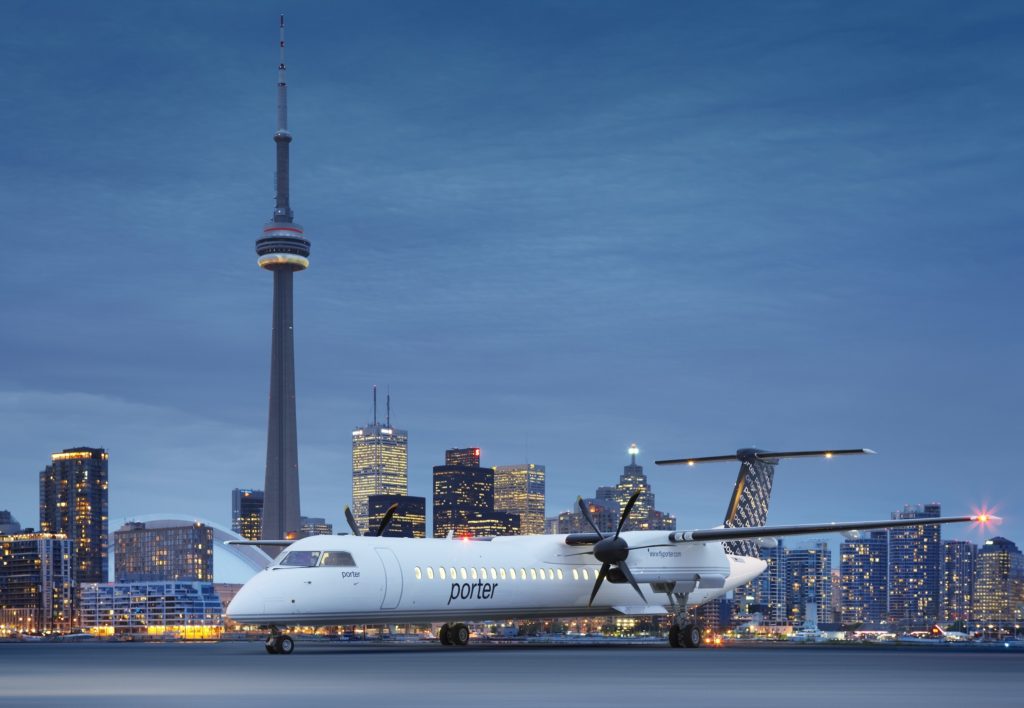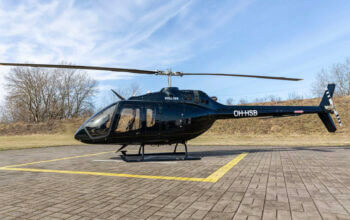Estimated reading time 7 minutes, 56 seconds.
Downtown airports play an important role in the local economy, and that message has to be conveyed to the surrounding population.
“It’s important to embrace the local community and offer jobs to local students and help them understand the economic benefits of the airport — and that inner city airports are easier to get to than suburban ones,” said Stewart Steeves, CEO, Vantage Airport Group and Chair, Board of Directors, LaGuardia Gateway Partners. Vantage manages a dozen airports in Canada, (including Hamilton International), the U.S., and Caribbean.
He made the remarks at the Oct. 17 to 19 Toronto Global Forum, during a session entitled, “The Role of Downtown Airports in Global Cities.”
Downtown airports are both a blessing and a curse to neighbours, noted Bernard Lavelle, Principal, BL Aviation Consulting. Both neighbours and local government were initially opposed to London City Centre Airport in the U.K. But after the two sides sat down, they found they agreed on more issues, such as economic growth and employment opportunities, than they opposed. So the airport focused on developing the positive aspects of their discussions.

Airports have to find their own identity — like YVR (Vancouver) did — by embracing the local indigenous community, noted Neil Pakey, CEO, Nieuport Aviation, terminal owner and operator at Billy Bishop Toronto City Airport.
The downtown airport is committed to community engagement like supporting waterfront activities such as local arts programs and an indigenous art gallery.
“Maybe we’ll even look at activities after the airport closes at 11 p.m., like (all-night celebration of contemporary art) Nuit Blanche,” suggested Pakey.
Travel has come “roaring back” at Billy Bishop, with traffic at over 80 percent of pre-Covid levels, he added. With continued growth, coupled with U.S. customs pre-clearance, the airport has the potential to deliver an economic impact of $4.8 billion in just a few years, according to an independent study by York Aviation.
Billy Bishop is already Canada’s fifth busiest airport in Canada for U.S. travel. By 2025, it is expected to serve just under five million passengers.
Downtown airports have a unique role to play in both the transportation and economic pulse of a city, noted Steeves, who said they form an important part of the overall aviation network of a city.
“They’re not necessary hub airports, so travellers who use (Billy Bishop) are destined for Toronto and are a direct contributor to that economy,” said Steeves.
Billy Bishop complements both Toronto’s Pearson with its larger aircraft, and Hamilton with its cargo activity, added Pakey.
About 38 percent of travellers to London Heathrow are business travellers compared to over 50 percent at London City Centre, which drives a lot of business traffic that has a multiplier effect on the local economy, noted Lavelle.
Downtown airports can also play a leading role in the climate transition.
“Aviation has an environmental responsibility, and airports are a critical component in that initiative,” said Steeves. “Airports are public facilities and they need to take a leadership role in reducing noise and pollution.”
Because it takes less time to travel to downtown airports and it takes less time for aircraft to get to and from gates than at major airports, downtown airports are already doing their part for the environment, he added.
About 73 percent of passengers at London City Centre use public transit to and from the airport. Parking is both limited and expensive to encourage the use of public transit, said Lavelle.
“Statistically, downtown airports have lower emissions, and the use of electrified ferries at Billy Bishop airport has motivated us to introduce electric buses at London City Centre,” he added.
To achieve their full impact, downtown airports must have a good public transit network and be environmentally responsible.
A pivotal year for London City Centre was 2005 when the airport was connected to a nearby railroad network, which appeared on London’s subway map so people knew where the airport was located. It also added new investment and housing to the area, said Lavelle.
On the environment front, ACI Europe, which represents European airports, has set a target of 2050 to be carbon neutral, whereas London City plans to get there by 2030, said Lavelle. “If airports want to grow, they need to grow sustainably.”
“Kudos to Ports Toronto for electrifying all their ferries which encouraged us to electrify all our busses,” added Pakey.
Asked what the aviation industry will look like 20 years from now and what it will mean to downtown airports, Lavelle said the use of electrified aircraft will become more mainstream, noting that Air Canada has agreed to purchase 30 ES-30 electric-hybrid aircraft that will seat up to 30 passengers. The aircraft are scheduled to enter service in 2028.
Demand for travel is growing and is at 110 percent of 2019 levels in the U.S., said Steeves, who noted electric aircraft are already in service. He noted seaplane operator Harbour Air of Vancouver completed its first all-electric test flight in August, although the aircraft is not yet in commercial use.
“We’ve come a long way in the last 20 years just from a noise perspective, and I suspect we’ll go at a faster rate in the next 20 years,” said Pakey, who predicted the security and check-in process will be speeded up through eye recognition technology.








